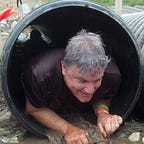SMART Goals
When I wrote the book, “Treatment Planning 101,” I tweaked the “A” and the “T” in SMART, an evolution of the popular goal-setting acronym that I had been teaching counselors for years but had not taken the time to write about.
SMART Evolved
The revised SMART acronym was:
· Simple,
· Measurable,
· Accountable,
· Realistic, and
· Timely.
Much of what I saw in the traditional application of SMART was redundant. A shift was in order.
I wrote the following about accountability:
“Accountability is critical to successful change. This is most often created by the coach-client or counselor-client relationship. But creating a circle of accountability outside the professional relationship and enhancing self-accountability means that the client is less dependent on professionals to achieve change in their life.”
I wrote the following about Timeliness:
“Timely is not a specific strategy to apply to a treatment-plan method, like adding numbers to make a plan measurable. Timely simply asks a yes-or-no question: Should I be doing this right now at this time in my life? Yes or no?”
In my evolving thinking about treatment planning, I differentiated between Timeliness and being Realistic:
“Realistic is also a yes-or-no question but focuses on whether someone can realistically achieve their stated goal, objective, or method in a specific time frame. For example, ‘Can I train for a marathon in 60 days?’ No, that’s not realistic. ‘Can I train for a 5K in 60 days?’ Yes, that is realistic.”
A new “R” for SMART Goals
Today, I had a conversation with a colleague, Jonathan Stallsmith. Jonathan and I met through a business networking group in Vermont’s Upper Valley. One of the many characteristics I admire about Jonathan is his commitment to personal development.
We were chatting today, strategizing for next week’s networking meeting, where Jonathan will present about SMART goals. I took the opportunity to ask him about what kind of goal-setter he is.
You see, some people would call me an unrealistic goal-setter. I sometimes — cross that — I always take on more than I can handle. Because of this, I experience failure. A lot.
The nexus of this type of goal-setting mindset lies somewhere in my history as an Outward Bound Instructor. — actually, even before that. It was an Outward Bound course I took in 1984 in the Florida Everglades that changed the trajectory of my life. A trajectory that brought me to a career as an Outward Bound Instructor and eventually Assistant Program Director at Thompson Island Outward Bound Education Center.
At its core, Outward Bound is about leaving behind the prison created by our “realistic” expectations and pushing beyond the point where we “know” we cannot go beyond. In that space between what many call “realistic” and failure, we discover who we truly are as human beings.
There was a time when we thought it was unrealistic to set a goal to run a mile faster than four minutes. People thought it was impossible. Then, Roger Bannister ran it at 3:59.4 on May 5, 1954. Then, not three weeks later, another unrealistic goal-setter, John Landy, did it in 3.58.0. Now, the 4-minute mile is the norm. How did that happen? Did we have some genetic evolution and the people today are somehow different than the people running before 1954? No. But we did have an evolution in what we considered “realistic.”
So maybe “realistic” isn’t such a good word for the “R” in SMART.
Jonathan, like myself, challenges himself to do more. In our conversation today, I learned that he does not use “realistic” for the “R” in the SMART goal-setting acronym. “I like ‘risk’ or ‘reach,’” he said.
When I heard that, it felt like I was struck by lightning. “Oh my gosh,” I replied. “I am stealing that.” That, to me, is the missing piece of goal setting I have always embraced but failed to articulate.
Evolve the “R” in Your SMART Goals
We live in a world of excess and comfort. A world of microwave dinners. A world where you don’t even need to get out of your chair to turn the lights on and off or change the music or TV. A world where articles like this can be written by a computer.
We live in a world where people get gold stars for just showing up, awards of excellence for mediocre performance, and trophies for trying. Few people truly live an audacious life. Few people challenge themselves. Few people strive to develop themselves.
Too many people take the easy way. Why? Because, well, it is easy.
That is because I follow an audacious path in my life. (Andrea Scott Brown came up with the Audacious Path Program, which I highly recommend).
When you set your next goal, focus on REACH more than you focus on REALISTIC. Don’t let being “realistic” be your excuse for mediocre goals and a mediocre life. Challenge yourself until you experience failure. Then you know you are really living live to it’s fullest. Then you know you are living audaciously. Then you know you are striving to develop.
Robert Browning wrote in Andrea del Sarto:
“I do what many dream of, all their lives,
— Dream? strive to do, and agonize to do,
And fail in doing.”
The Striving Zone
Something happens when we reach. Something happens when we risk. Something happens when we challenge ourselves to the point where we experience failure.
We grow in a way that we don’t expect. I can’t tell you exactly what that is. But I can guarantee that if you challenge yourself until you experience failure, you will experience character growth. You will practice tenacity. You will develop equanimity. You will see your true self.
Robert Browning again sheds wisdom on this in his poem, Andrea del Sarto:
“a man’s reach should exceed his grasp,
Or what’s a heaven for?”
Reach. Risk. Revolt against being realistic.
